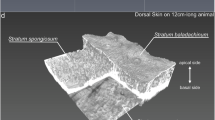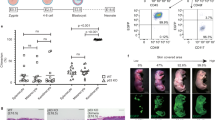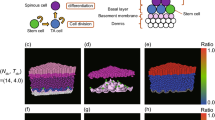Abstract
IT has been shown by morphological studies that the dermatome of the somites of the vertebrate embryo breaks up into mesenchyme, which becomes the dermis underlying the ectodermal component of the skin of the dorsal and dorso-lateral regions at least. It is frequently assumed in text-books that these same cells spread out under the whole of the epidermis of the embryo and so give rise to the dermis of all regions. In the case of the chick at least, this assumption is not justified, for the mesenchyme derived from the dermatome is indistinguishable from, and becomes mixed with, that derived from other regions. In the course of certain experiments carried out with another object, I have obtained evidence which indicates strongly that the dermis of the limbs and lateral regions, and by implication of the ventral regions, is derived from cells of the somatopleur, not of the dermatome.
This is a preview of subscription content, access via your institution
Access options
Subscribe to this journal
Receive 51 print issues and online access
$199.00 per year
only $3.90 per issue
Buy this article
- Purchase on SpringerLink
- Instant access to full article PDF
Prices may be subject to local taxes which are calculated during checkout
Similar content being viewed by others
Author information
Authors and Affiliations
Rights and permissions
About this article
Cite this article
MURRAY, P. The Origin of the Dermis. Nature 122, 609 (1928). https://doi.org/10.1038/122609a0
Issue date:
DOI: https://doi.org/10.1038/122609a0



